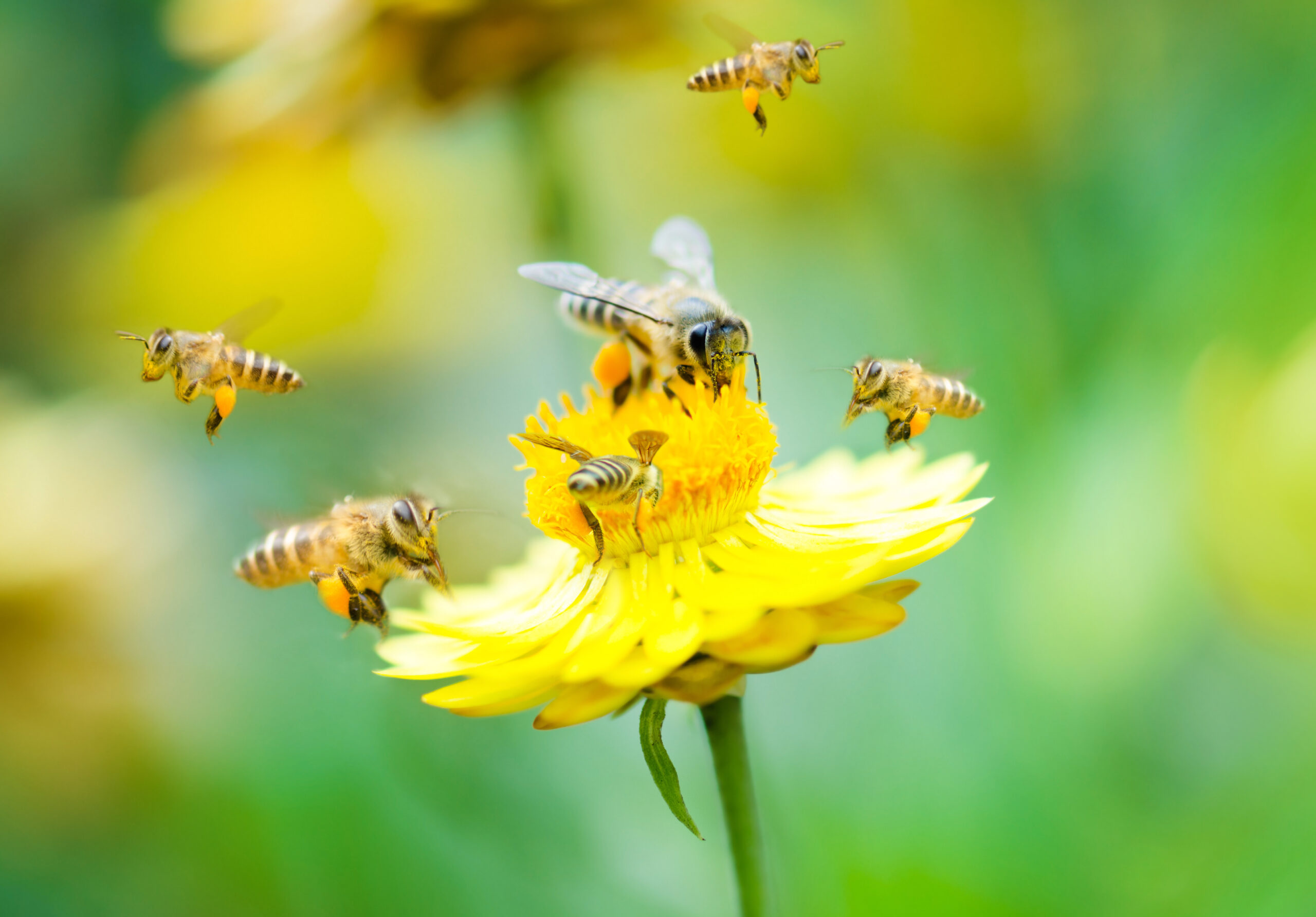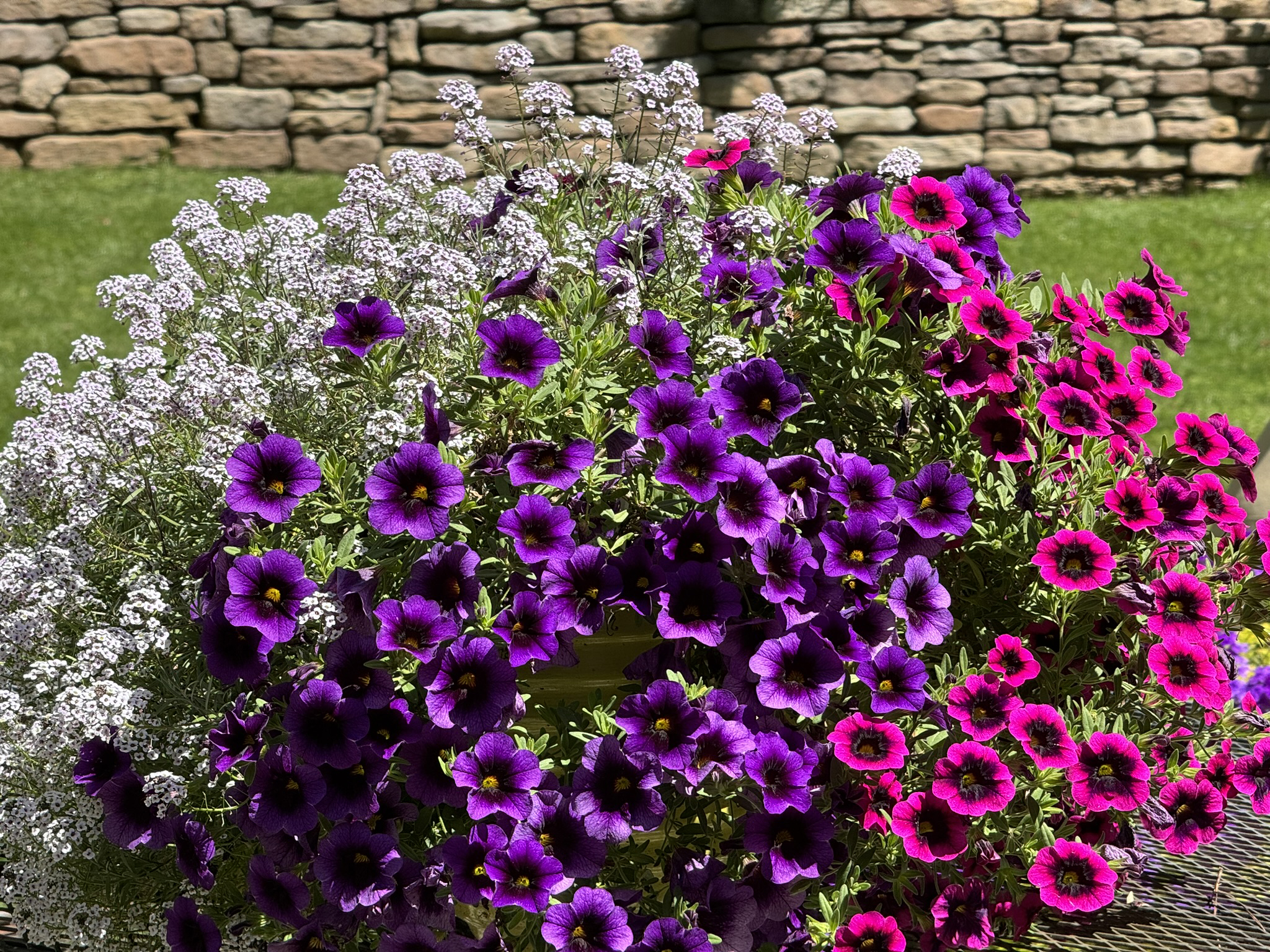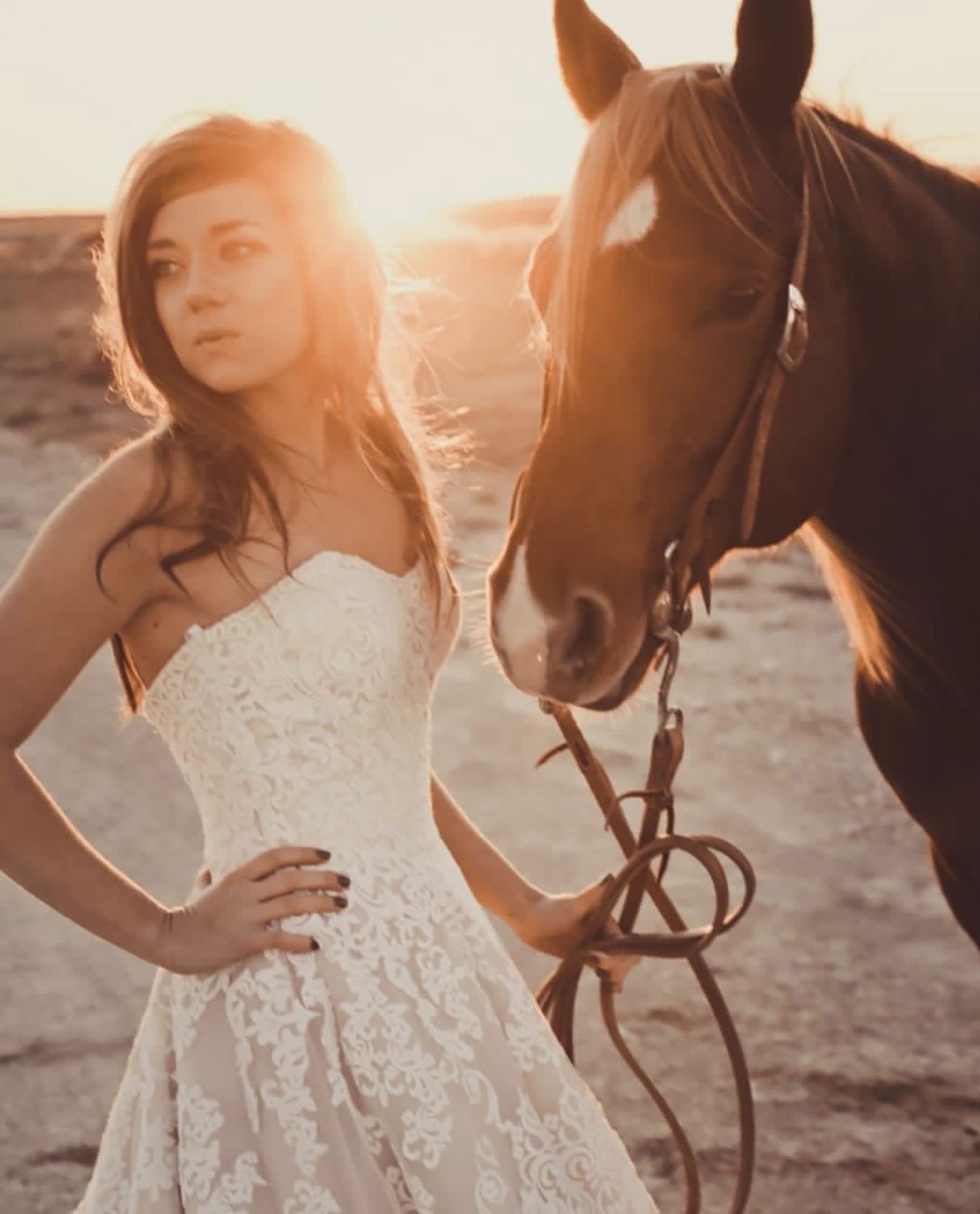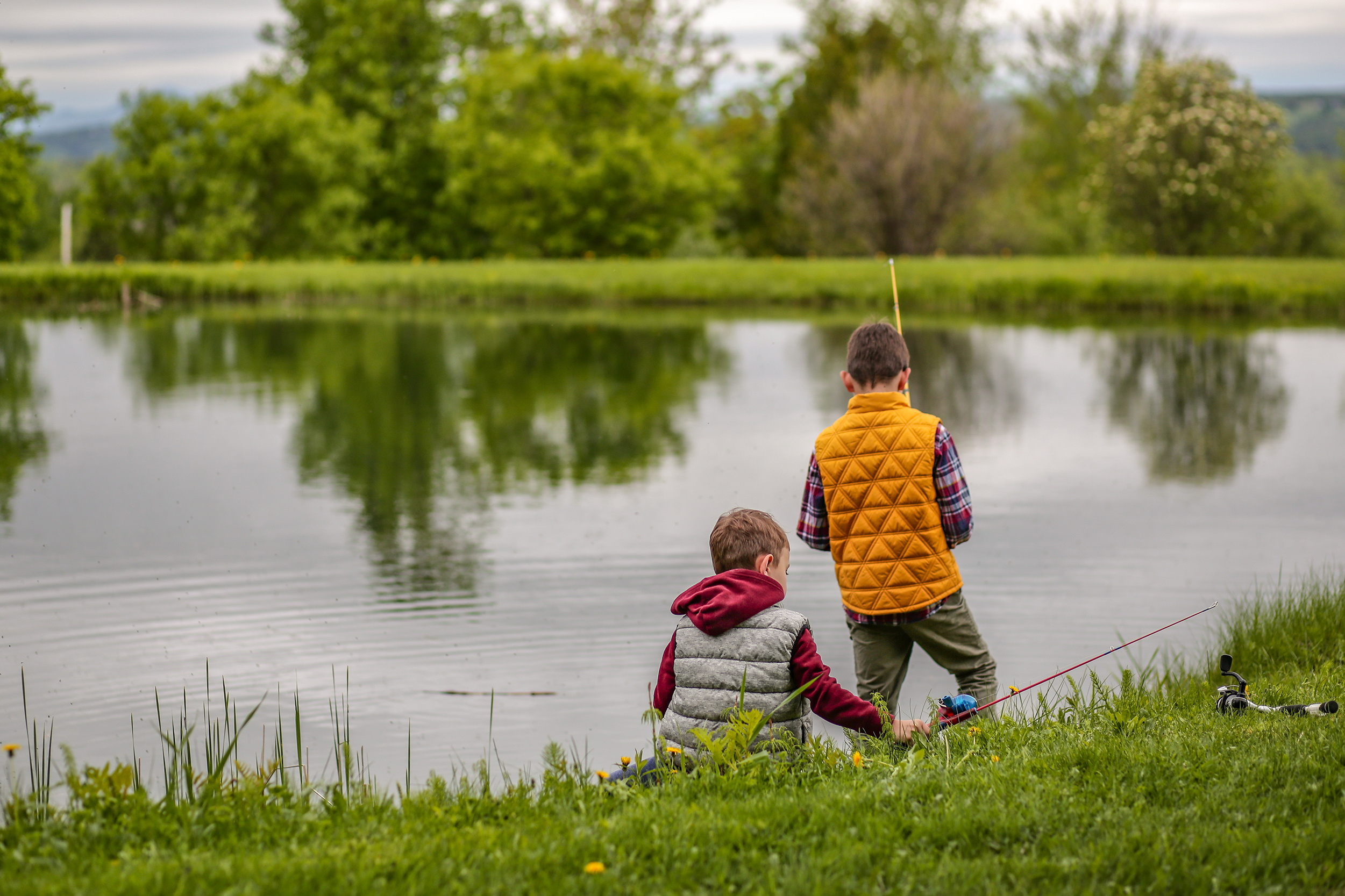Country Lifestyle
Protecting Pollinators: Strategies for Supporting Bee Populations in Oklahoma

Pollinators, especially bees, play a crucial role in our ecosystem and agricultural landscape. They are responsible for pollinating many of the crops that we rely on for food production. However, bee populations worldwide have been declining due to various factors, including habitat loss, pesticide use, disease, and climate change. In Oklahoma, where agriculture is a significant industry, protecting pollinators is of utmost importance. Here we explore some strategies for supporting bee populations in Oklahoma and why it’s essential for the health of our environment and economy.
Understanding the Importance of Bees
Before delving into strategies for protecting bee populations, it’s essential to understand why bees are so vital. Bees are one of the most effective pollinators, playing a crucial role in the reproduction of flowering plants, including many crops such as fruits, vegetables, and nuts. Without bees, the pollination process would be severely disrupted, leading to reduced crop yields and potentially threatening food security.
In Oklahoma, bees contribute significantly to the state’s agricultural economy by pollinating crops like cotton, canola, alfalfa, and various fruits and vegetables. According to the Oklahoma Department of Agriculture, Food, and Forestry, pollinators contribute over $157 million annually to the state’s economy. Therefore, protecting bee populations is not only essential for environmental conservation but also for the economic sustainability of agriculture in Oklahoma.
Challenges Facing Bee Populations in Oklahoma
Despite their importance, bee populations in Oklahoma, like elsewhere, face numerous challenges that threaten their survival. One of the primary threats is habitat loss due to urbanization, agricultural expansion, and land development. As natural habitats disappear, bees lose the food sources and nesting sites they need to thrive.
Furthermore, the use of pesticides, including neonicotinoids and other chemical treatments, poses a significant risk to bee populations. Pesticides can harm bees directly through poisoning or indirectly by contaminating their food sources and disrupting their reproductive cycles. Climate change also exacerbates the challenges faced by bees, affecting flowering patterns, altering habitat suitability, and increasing the frequency of extreme weather events.
Strategies for Supporting Bee Populations
While the challenges facing bee populations are daunting, there are several strategies that individuals, farmers, and policymakers can implement to support bee populations in Oklahoma:
- Creating Pollinator Habitat: One of the most effective ways to support bees is by creating and preserving pollinator-friendly habitat. This can include planting native wildflowers, flowering trees, and shrubs that provide bees with a diverse and abundant source of nectar and pollen. Additionally, leaving natural areas, such as meadows and hedgerows, untouched can provide essential nesting sites for solitary bees.
- Reducing Pesticide Use: Minimizing the use of pesticides, especially bee-toxic chemicals like neonicotinoids, is crucial for bee conservation. Farmers can adopt integrated pest management (IPM) practices that prioritize non-chemical methods of pest control, such as crop rotation, biological control, and using pest-resistant crop varieties. When pesticides are necessary, they should be applied judiciously, following label instructions and avoiding spraying during times when bees are most active.
- Supporting Organic Agriculture: Organic farming practices that eschew synthetic pesticides and fertilizers are inherently more bee-friendly. By supporting organic agriculture and purchasing organic products, consumers can help create demand for farming methods that prioritize environmental sustainability and pollinator health.
- Educating the Public: Increasing public awareness about the importance of bees and the threats they face is essential for fostering support for bee conservation efforts. Educational initiatives can include school programs, community workshops, and public outreach campaigns that highlight the role of bees in food production and the steps individuals can take to protect them.
- Collaborating with Stakeholders: Protecting bee populations requires collaboration among various stakeholders, including farmers, landowners, conservation organizations, government agencies, and researchers. By working together, these groups can develop and implement comprehensive strategies for conserving bee habitat, reducing pesticide exposure, and promoting bee-friendly farming practices.
Conclusion
Protecting pollinators, particularly bees, is a critical priority for environmental conservation and agricultural sustainability in Oklahoma. By implementing strategies such as creating pollinator habitat, reducing pesticide use, supporting organic agriculture, educating the public, and collaborating with stakeholders, we can help support bee populations and ensure their continued role in pollinating our crops and maintaining ecosystem health. By taking action now, we can secure a future where bees thrive, benefiting both our environment and our economy.
Top of Form
References:
Oklahoma Department of Agriculture, Food, and Forestry. (n.d.). Pollinators in Oklahoma. Retrieved from https://www.oda.state.ok.us/food/fs-pollinators.htm
Xerces Society for Invertebrate Conservation. (2022). Neonicotinoids. Retrieved from https://xerces.org/neonicotinoids
National Institute of Environmental Health Sciences. (2022). Climate Change and Human Health – Heat Impacts on Pollinators. Retrieved from https://www.niehs.nih.gov/research/supported/translational/peph/webinars/heat-impacts-on-pollinators/index.cfm
United States Environmental Protection Agency. (2022). Integrated Pest Management (IPM) Principles. Retrieved from https://www.epa.gov/safepestcontrol/integrated-pest-management-ipm-principles
Organic Trade Association. (n.d.). Why Buy Organic? Retrieved from https://www.ota.com/why-buy-organic
Pollinator Partnership. (n.d.). Education & Outreach. Retrieved from https://www.pollinator.org/education-outreach
United States Department of Agriculture. (n.d.). Partnerships for Pollinators. Retrieved from https://www.usda.gov/media/blog/2016/06/24/partnerships-pollinators
These references provide a comprehensive overview of the topics discussed in the article, including the importance of pollinators, the challenges they face, and strategies for supporting bee populations in Oklahoma.
Country Lifestyle
Superbells Blackcurrant Punch

Rare Color for Baskets and Mixed Containers
By Norman Winter | Horticulturist Author and Speaker
The Garden Guy has become completely mesmerized by a bowl of blackcurrants. You can guess I am having a little fun with you. I am not talking about the fruit but the flowers referred to as Superbells Blackcurrant Punch.
This year most everything came through the winter including a few plants I am even asking where did you come from? The spring has been long, gloriously beautiful and still in progress and all of the Superbells calibrachoas taking your breath away with their beauty.
I have written about the ‘Punch Group’ but never about a single color. I love every one of them but this year I just have to dedicate a column to Superbells Blackcurrant Punch. Yes, I do have a couple of yellow bowls where they are showing out but in reality, they are mixed in a lot of my containers.
Superbells Blackcurrant Punch has won a ‘baker’s dozen’ of awards, Top Performers, and Perfect Scores north to south and east to west. Like the others they reach about 12-inches tall with up to a 2-foot spread. They obviously have some cold tolerance as mine have come through the winter. The caveat is they did spend five consecutive nights in the garage. Their beauty in March and April has defied logic.
The color which is so rare in the garden makes it a must have plant. I found a Proven Winners description from several years ago that nails it, Superbells Blackcurrant Punch has bright fuchsia-colored petals with velvety black centers and a subtle yellow in the throat. It will be hard to pass by if you are lucky enough to find them at the garden center.
Your success will come from growing them in containers with a very good potting soil. Give them plenty of sun. There is a lot of garden gossip that says you can’t grow them with Supertunias, Superbenas or a plethora of other plants because of different water requirements.
In the South we water containers and baskets every day unless we get rain. These containers drain freely so life is the same for all the plants. Since we water so frequently, we need to feed on a regular basis. The Garden Guy mixes up the blue water-soluble mix and feeds the container grown plants about every three weeks. At some point the Superbells Blackcurrant Punch will look tired and in need of a trim. This haircut so to speak will generate new growth, and blooms for the fall.
Your choice of partners is only limited by your imagination. I love them with Lemon Coral sedum, Superbena Cobalt verbena, Blush Princess sweet alyssum and mixed with other calibrachoas like Superbells Grape Punch and Magic Pink Lemonade. They are heavenly with Primo Wild Rose heuchera and Superbena Whiteout verbena.
All of the Superbells attract both hummingbirds and butterflies. The butterflies I have photographed so far have all been Eastern Tiger Swallowtails. You have to admit that’s not bad for flowers that are so pretty. Planting season is here, keep a spot open in your mixed-container recipes for Superbells Black Currant Punch or some of the other Superbells calibrachoas that now total 41. Follow me on Facebook @NormanWinterTheGardenGuy for more photos and garden inspiration.
Country Lifestyle
Western Housewives – June 2024

Life consists of small events that define us. Sometimes, it’s something as simple as eating cake with your two-year-old at midnight at your sister’s wedding. Sometimes, it’s something as painful as taking your two-week-old to the emergency room with RSV and living there for a week. Both are moments that changed me, and both are moments that I’ll remember forever.
Often my defining moments have happened on the back of a horse. I guess that is because that is where I have spent most of my life. It has made me pay special attention to each horse I have ridden during different stages of my life.
My first horse was a big bay horse that was must have reminded me of Greek mythology because it took me about two seconds to name him “Hercules.” He was the perfect mount for a five-year-old that acted tough but was secretly scared of her own shadow. Once I got Hercules, I could start going to work with my dad. We gathered wheat pastures and road pens, and he let me sit in the round pen on Hercules while he worked his sale horses. At the ripe age of five I was a pretty seasoned pen rider and had the sour disposition to prove it.
One morning we had a lot of wheat pasture freshies to turn out. Naturally, they ran off as soon as they got off the truck. Babies cry, and wheat pasture cattle run off the truck; I don’t make the rules.
My Dad had to leave me and get in front of the herd to keep them from crashing into the fence. I’m sure he told me just to stay put, but Hercules got excited by all the commotion and started following the impending stampede. Now I realize that I was safe the entire time, but, at that moment, I was certain my life was over. I was dramatic even as a youngster. Would Hercules ever stop? Would he try and jump the sprinkler tracks? What if he runs through the hot wire? And most importantly, what will I tell my friends?
About the time I was ready to jump into the dirt my Dad ran up beside me and helped me stop Hercules. I was safe, my adrenaline was pumping and I was promised an Allsup’s Coke for all my troubles. That was a defining moment in my life. I realized the more danger you got yourself in to, the much bigger the condolence award. As long as I was able to keep it to an Allsup’s Coke level of danger I would be just fine.
The next horse I truly loved was named “Alotofbull” He was anything but full of bull. He was big, cowy, and athletic. He scared me just a little but that’s what made me love him the most. My Dad and I won countless events on Alotofbull. My Dad has true horsemanship pumping through his veins, but I can only credit my riding success to Alotofbull. He made things easy for me and I felt I was nothing without him.
Even after all the ribbons, the moment I remember the most about him wasn’t in the showpen. it was in the middle of nowhere on a place we called “The Cain.” The Cain was where I spent many fall afternoons and summer mornings. It was full of Sandhills, cactus that were found of my backside every time my seat left the saddle, and absolutely no sign of civilization. We would push cows to water, move pastures, and do other slow-paced things that were good for the horse and for the mind. I loved it there.
One afternoon in the middle of June, my Dad and I were moving some cattle to water. After we were done we came upon a set of old pens that my Dad had branded calves in with his Dad a long time ago. My Dad got quiet and solemn. Traits that were unusual for him. He started to reminisce of times long ago and told me how much he wished all his kids had gotten to know his Dad before he had passed away many years prior. I was only 14 at the time, and I was having trouble holding back tears myself. I leaned forward and played with Alotofbull’s black mane. I knew my grandfather had been a special man and I knew my Dad had cherished him. It made me see my Dad in a different light going forward. Yes, he was strong and resilient, but he was also human, just like the rest of us. He had a vulnerability in his life, too. It was a moment that taught me not to be afraid to talk about the hard stuff but to always press on. No matter what.
Many years later, I found myself in beautiful Oklahoma on a horse named “Reuben.” He was my then-boyfriend’s horse and was the only quick and little horse I had ever ridden. He was spunky and made me feel like better help than I was as we gathered pairs to wean that morning.
The sun was just coming up over the cottonwood trees, making the dewy grass shine. I looked over at the man beside me and just knew I would spend the rest of my life doing this very thing with him. I didn’t care if we ever had money or much of anything, really. As long as we were together, loving God, and riding good horses, I didn’t care about anything else.
About 12 hours later, after a long day and a few incidents that may or may not have involved me getting run over by a yearling, that same man proposed to me. We had never talked about it out loud, but I guess God had put it in both of our hearts. It was a moment that, of course, changed the rest of my life. It taught me not to overthink things when they are right and that an Oklahoma cowboy was just what my life needed.
I’ve had many horses and many defining moments in my life. Sometimes, I have loved the horse, and sometimes, I have not. The same goes for the moments. Nevertheless, each horse and moment has taught me something. After all this time, I am convinced that no matter how old I get, I will never be too old to ride a good horse because I will never be too old for a defining moment.
That being said, if one or two of my life lessons could involve another Allsup’s Coke, that’d be all right by me.
Country Lifestyle
A Beginners Guide to Fishing

It seems that the subjects of countless profiles in the past year have mentioned, whether in passing or as part of a larger discussion, that the COVID-19 pandemic changed Oklahoma’s landscape in numerous ways. By and large, the overwhelming observation is that Okies in urban areas have begun migrating to the country, and are embracing the rural lifestyle. Small farms are popping up with a variety of animals, and gardens are being planted where there wasn’t one before.
It made me think that there are likely people out there who don’t know the basics of one of Oklahoma’s favorite pastimes: fishing.
With countless lakes, rivers, and streams teeming with a diverse array of fish species, Oklahoma offers ample opportunities for anglers of all ages and skill levels to cast their lines and reel in memorable catches.
If you’re new to fishing and eager to dip your toes into the water, don’t be afraid. Here are a few basic concepts to get you started.
Understanding Oklahoma’s Fishing Scene
Before you embark on your angling adventure, it’s essential to familiarize yourself with Oklahoma’s diverse fishing opportunities. From largemouth bass in the renowned Lake Texoma to catfish in the Red River, each region of the state offers its own distinct fishing experience. Consult resources such as the Oklahoma Department of Wildlife Conservation website and local fishing guides to discover prime fishing spots near you and learn about the regulations and licensing requirements specific to Oklahoma waters.
Gear Up
One of the first steps in getting started with fishing is acquiring the necessary gear. For beginners, a basic fishing rod and reel combo will suffice. Opt for a versatile spinning or spincast reel paired with a medium-action rod, which offers flexibility and ease of use for a variety of fishing techniques. Additionally, invest in essential tackle such as hooks, sinkers, bobbers, and a selection of artificial lures or live bait, depending on your preferred fishing style and target species.
Learn the Ropes
Before you hit the water, take some time to familiarize yourself with the fundamentals of fishing. Practice tying basic fishing knots, which are essential for securing your line and attaching hooks and lures. Watch online tutorials or consult instructional books and videos tailored to beginner anglers to learn casting techniques, proper rod handling, and best fish handling practices.
Choose Your Fishing Spot
Oklahoma boasts an abundance of fishing hotspots, ranging from expansive reservoirs and scenic rivers to hidden ponds and urban lakes. Consider factors such as proximity, accessibility, and the type of fish you’re targeting when selecting your fishing spot. Popular destinations for beginners include Lake Hefner in Oklahoma City, Lake Thunderbird near Norman, and the Illinois River in northeastern Oklahoma, known for its scenic beauty and excellent trout fishing.
There are also countless farm ponds, but, I hope it goes without saying, you must obtain the land-owner’s permission to access their lands and fish their ponds.
Follow Fishing Regulations
Before you embark on your fishing excursion, familiarize yourself with Oklahoma’s fishing regulations and licensing requirements. The ODWC website provides up-to-date information on fishing seasons, bag limits, size restrictions, and license fees. Remember to obtain a valid fishing license and any additional permits required for specific fishing locations or species, as failure to comply with regulations can result in fines and penalties.
Practice Patience and Persistence
Fishing is as much about patience and persistence as it is about skill and technique. Be prepared to spend time waiting for the fish to bite, and don’t get discouraged if you don’t reel in a trophy catch on your first outing. Experiment with different baits, lures, and fishing techniques, and don’t be afraid to seek advice from experienced anglers or local bait shops. You’ll soon become more proficient and confident in your fishing abilities with practice and perseverance.
By gearing up with the right equipment, learning essential fishing skills, choosing the perfect fishing spot, following regulations, and embracing patience and persistence, beginners can set themselves up for a rewarding and enjoyable fishing experience in the Sooner State.
References:
Oklahoma Department of Wildlife Conservation (ODWC). “Fishing Regulations.” wildlife.ok.gov/fishing/regulations
ODWC. “Fishing in Oklahoma.” wildlife.ok.gov/fishing
-

 Country Lifestyle7 years ago
Country Lifestyle7 years agoJuly 2017 Profile: J.W. Hart
-

 Outdoors6 years ago
Outdoors6 years agoGrazing Oklahoma: Honey Locust
-

 Country Lifestyle3 years ago
Country Lifestyle3 years agoThe Two Sides of Colten Jesse
-

 Outdoors4 years ago
Outdoors4 years agoPecan Production Information: Online Resources for Growers
-

 Equine7 years ago
Equine7 years agoUmbilical Hernia
-

 Attractions7 years ago
Attractions7 years ago48 Hours in Atoka Remembered
-

 Farm & Ranch6 years ago
Farm & Ranch6 years agoHackberry (Celtis spp.)
-

 Outdoors3 years ago
Outdoors3 years agoSuzy Landess: Conservation carries history into the future




